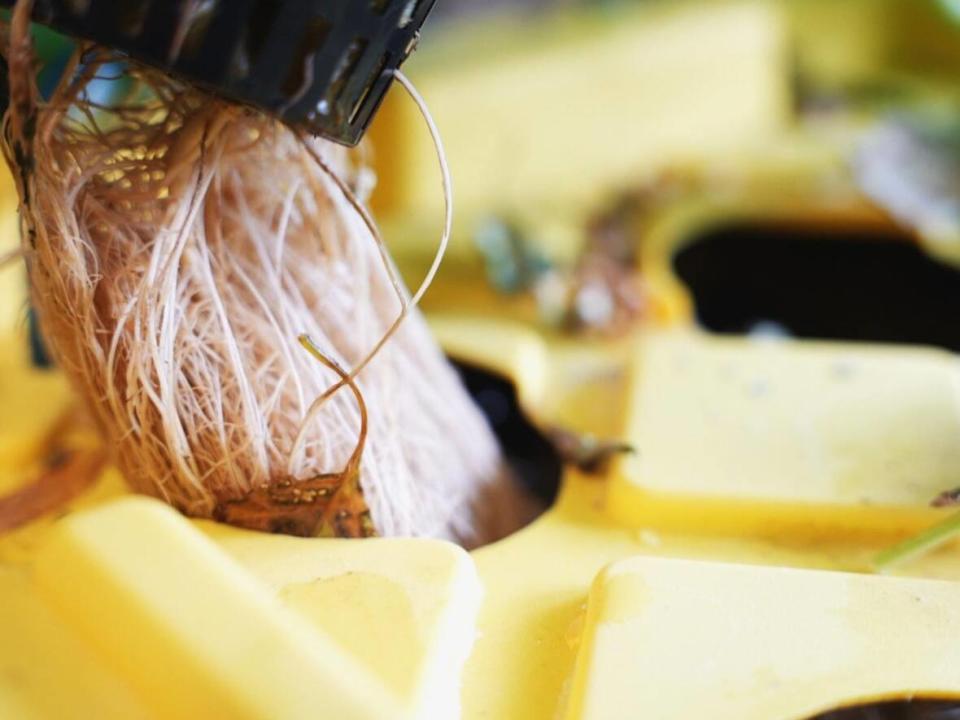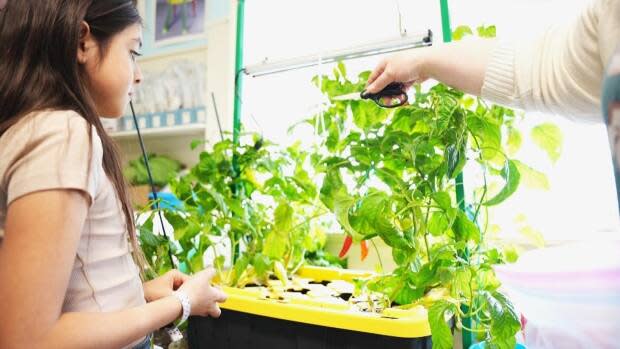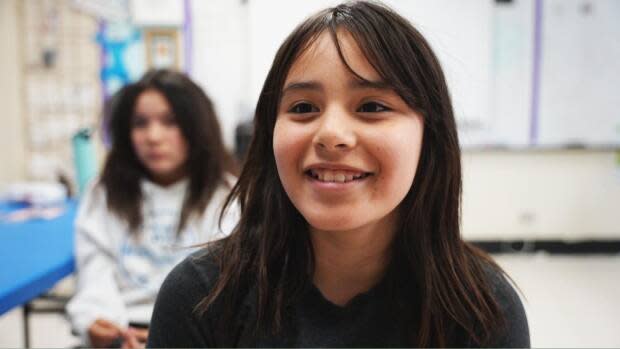A hydroponic harvest in this Labrador classroom is teaching kids about food security

Classroom gardens have been fruitful this winter throughout Labrador, but without any soil involved.
The organization SucSeed has supplied hydroponic kits to all Newfoundland and Labrador English School District schools in the Labrador region.
Now it's time for classes at Lake Melville School in North West River to harvest.
"It's like fun to grow stuff inside," said Grade 4 student Jocelyn Rich. "'Cause you get to see it grow."

Rich's class grew lettuce, kale and spicy peppers. The group tried to grow tomatoes, but the plants didn't flower. Teacher Jennifer Baker said using the kit offered a prime opportunity to teach the kids about sustainability, growing their own food and food insecurity.
"The kids nowadays know the hardships that some parents [and] families face when it comes to cost of living," said Baker. "The talk is everywhere."
LISTEN: These Grade 4 students talk about what it takes to grow their own veggies:
Food insecurity grows in N.L.: University of Toronto
Food insecurity has increased throughout the country from 2021 to 2022, according to a report from the University of Toronto. The researchers looked at data from Statistics Canada's 2021 Canadian Income Survey.
The report said the highest amount of food-insecure homes was in Atlantic Canada.
Newfoundland and Labrador had the third-highest rate of food insecurity at 22.5 per cent of households, the report said. It's an increase from 17.5 per cent of homes in 2021.

The report said the situation in Indigenous communities and remote northern communities is likely worse given the lack of representation in national surveys.
Baker said the experience of growing their own vegetables helped the kids take responsibility in a small way — and also brought a glimmer of anticipation to their school day.
"Just waiting to see something pop up, [or] the colours, like the peppers, waiting for [them] to turn," Baker said. "First you get the little green ones, then they turn orange and then they'll go red ... just the excitement in that," Baker said.

The lettuce was used for tacos for the class and the spicy peppers will be used for a jelly preserve. Baker said she hopes to see the program expand next year with more classrooms involved and potentially a recess program for interested students.
In the future, Rich said she thinks she may do more gardening to grow strawberries and lettuce: a way, she says, to avoid paying for "expensive stuff at the store."

